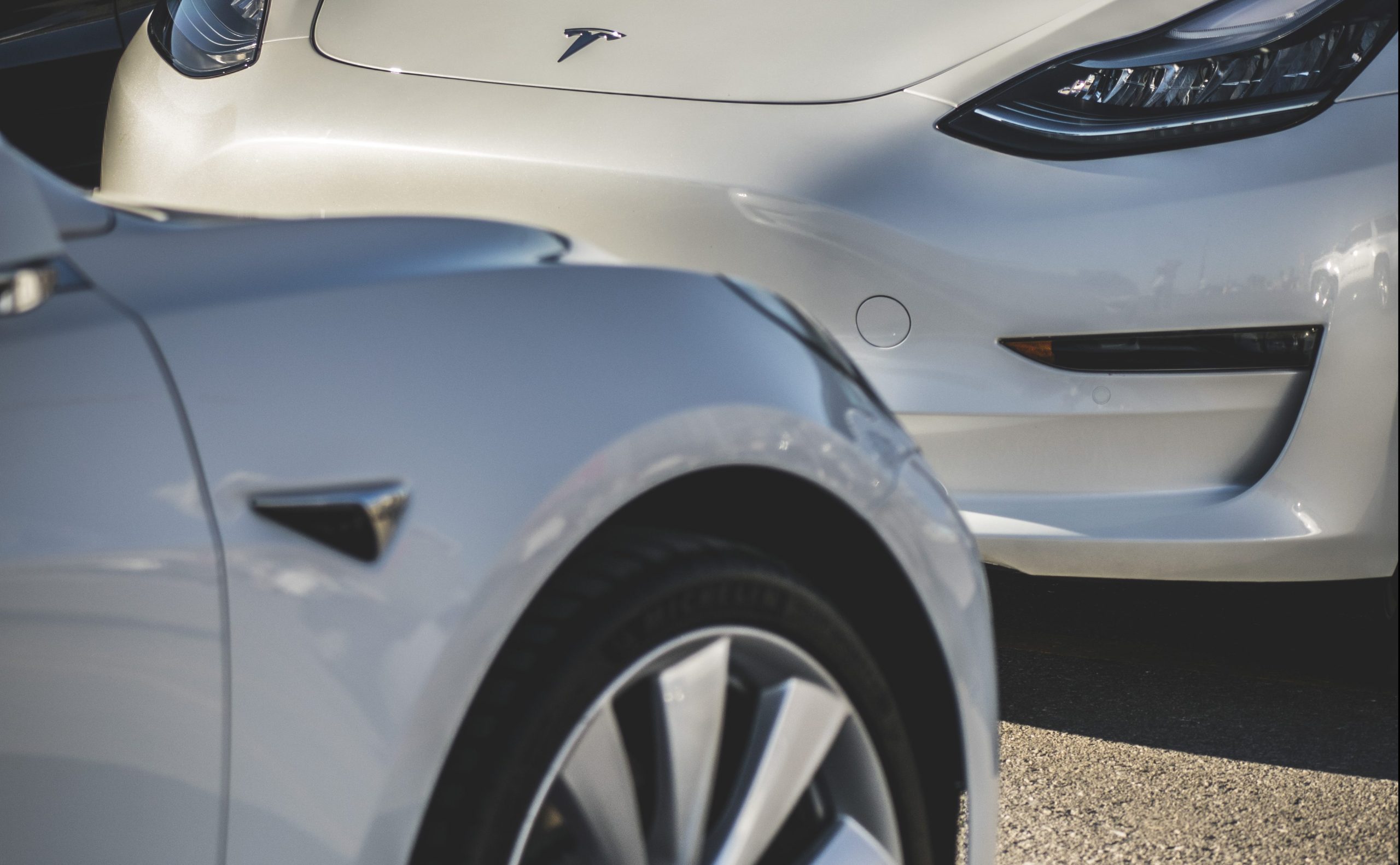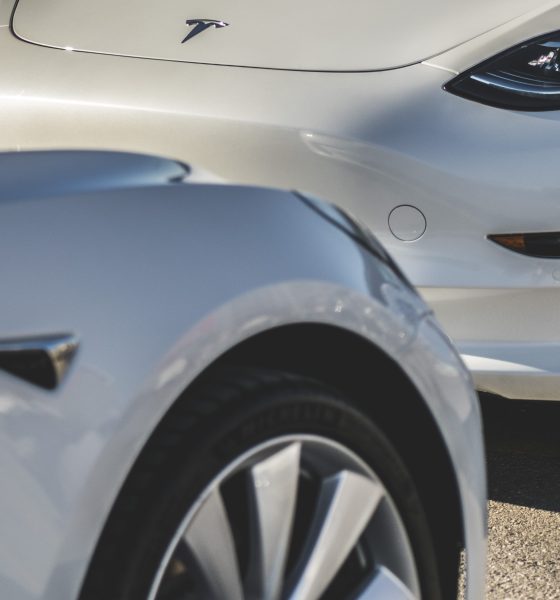Tesla received a new patent last week for “estimating object properties using visual image data.” Elon Musk estimated that Tesla would release a version of FSD Beta in April. At the time, he also mentioned that Tesla was going for pure vision and suggested that it would not even use radar sensors in the future.
“According to their patent, this invention aims to address the increasing cost and complexity of vision sensors for mass-market autonomous vehicles. This method enables a vehicle to detect and interpret the distance to its surroundings using the vehicle’s image data and machine learning,” explained law firm Founders Legal to Teslarati.
Tesla’s patent describes an invention using two neural networks to gauge the distances of objects using only image data. The first neural network can determine the distance of objects from images captured by the cameras around a vehicle. The other neural network creates training material in the form of annotated images for the first neural network.
In the patent, Tesla states that there is a need to find the right amount of sensors to put on an autonomous vehicle without limiting the amount of data it can capture and process. Tesla states that vision sensors, like radar, lidar, and ultrasonic sensors, can become too costly to put in a mass market vehicle and increase the “input bandwidth requirements” for an autonomous driving system.
The patent describes a configuration with a good balance of sensors and cameras to determine the distances of objects around a vehicle. This should allow Tesla to employ a system that could perform at a level comparable to industry leaders while keeping costs as low as possible.
“As the number and types of sensors increases, so does the complexity and cost of the system. For example, emitting distance sensors such as lidar are often costly to include in a mass market vehicle. Moreover, each additional sensor increases the input bandwidth requirements for the autonomous driving system. Therefore, there exists a need to find the optimal configuration of sensors on a vehicle. The configuration should limit the total number of sensors without limiting the amount and type of data captured to accurately describe the surrounding environment and safely control the vehicle,” Tesla wrote.

The patent also provides Tesla with a way to automatically label vision data. Considering that labeling is one of the most time-consuming part of Tesla’s FSD development, such a system would likely accelerate the development and release of updates and improvements to the company’s Full Self-Driving and Autopilot suites.
“In various embodiments, the collection and association of auxiliary data with vision data is done automatically and requires little, if any, human intervention. For example, objects identified using vision techniques do not need to be manually labeled, significantly improving the efficiency of machine learning training. Instead, the training data can be automatically generated and used to train a machine learning model to predict object properties with a high degree of accuracy,” Tesla wrote.
The configuration described in Tesla’s patent should significantly improve its Full Self-Driving (FSD) technology. It may reduced Tesla’s reliance on sensors and increase the amount of data that can be extracted from images to improve FSD Beta. Tesla’s image-based approach to FSD differs considerably from its competitors like Waymo but has yielded some rather impressive results based on some FSD Beta users’ experiences thus far.
Tesla’s “Estimating object properties using visual image data” patent could be accessed below.
Vision Only Patent by Maria Merano on Scribd
The Teslarati team would appreciate hearing from you. If you have any tips, email us at tips@teslarati.com or reach out to me at maria@teslarati.com.

Elon Musk
Starlink passes 9 million active customers just weeks after hitting 8 million
The milestone highlights the accelerating growth of Starlink, which has now been adding over 20,000 new users per day.

SpaceX’s Starlink satellite internet service has continued its rapid global expansion, surpassing 9 million active customers just weeks after crossing the 8 million mark.
The milestone highlights the accelerating growth of Starlink, which has now been adding over 20,000 new users per day.
9 million customers
In a post on X, SpaceX stated that Starlink now serves over 9 million active users across 155 countries, territories, and markets. The company reached 8 million customers in early November, meaning it added roughly 1 million subscribers in under seven weeks, or about 21,275 new users on average per day.
“Starlink is connecting more than 9M active customers with high-speed internet across 155 countries, territories, and many other markets,” Starlink wrote in a post on its official X account. SpaceX President Gwynne Shotwell also celebrated the milestone on X. “A huge thank you to all of our customers and congrats to the Starlink team for such an incredible product,” she wrote.
That growth rate reflects both rising demand for broadband in underserved regions and Starlink’s expanding satellite constellation, which now includes more than 9,000 low-Earth-orbit satellites designed to deliver high-speed, low-latency internet worldwide.
Starlink’s momentum
Starlink’s momentum has been building up. SpaceX reported 4.6 million Starlink customers in December 2024, followed by 7 million by August 2025, and 8 million customers in November. Independent data also suggests Starlink usage is rising sharply, with Cloudflare reporting that global web traffic from Starlink users more than doubled in 2025, as noted in an Insider report.
Starlink’s momentum is increasingly tied to SpaceX’s broader financial outlook. Elon Musk has said the satellite network is “by far” the company’s largest revenue driver, and reports suggest SpaceX may be positioning itself for an initial public offering as soon as next year, with valuations estimated as high as $1.5 trillion. Musk has also suggested in the past that Starlink could have its own IPO in the future.
News
NVIDIA Director of Robotics: Tesla FSD v14 is the first AI to pass the “Physical Turing Test”
After testing FSD v14, Fan stated that his experience with FSD felt magical at first, but it soon started to feel like a routine.

NVIDIA Director of Robotics Jim Fan has praised Tesla’s Full Self-Driving (Supervised) v14 as the first AI to pass what he described as a “Physical Turing Test.”
After testing FSD v14, Fan stated that his experience with FSD felt magical at first, but it soon started to feel like a routine. And just like smartphones today, removing it now would “actively hurt.”
Jim Fan’s hands-on FSD v14 impressions
Fan, a leading researcher in embodied AI who is currently solving Physical AI at NVIDIA and spearheading the company’s Project GR00T initiative, noted that he actually was late to the Tesla game. He was, however, one of the first to try out FSD v14.
“I was very late to own a Tesla but among the earliest to try out FSD v14. It’s perhaps the first time I experience an AI that passes the Physical Turing Test: after a long day at work, you press a button, lay back, and couldn’t tell if a neural net or a human drove you home,” Fan wrote in a post on X.
Fan added: “Despite knowing exactly how robot learning works, I still find it magical watching the steering wheel turn by itself. First it feels surreal, next it becomes routine. Then, like the smartphone, taking it away actively hurts. This is how humanity gets rewired and glued to god-like technologies.”
The Physical Turing Test
The original Turing Test was conceived by Alan Turing in 1950, and it was aimed at determining if a machine could exhibit behavior that is equivalent to or indistinguishable from a human. By focusing on text-based conversations, the original Turing Test set a high bar for natural language processing and machine learning.
This test has been passed by today’s large language models. However, the capability to converse in a humanlike manner is a completely different challenge from performing real-world problem-solving or physical interactions. Thus, Fan introduced the Physical Turing Test, which challenges AI systems to demonstrate intelligence through physical actions.
Based on Fan’s comments, Tesla has demonstrated these intelligent physical actions with FSD v14. Elon Musk agreed with the NVIDIA executive, stating in a post on X that with FSD v14, “you can sense the sentience maturing.” Musk also praised Tesla AI, calling it the best “real-world AI” today.
News
Tesla AI team burns the Christmas midnight oil by releasing FSD v14.2.2.1
The update was released just a day after FSD v14.2.2 started rolling out to customers.

Tesla is burning the midnight oil this Christmas, with the Tesla AI team quietly rolling out Full Self-Driving (Supervised) v14.2.2.1 just a day after FSD v14.2.2 started rolling out to customers.
Tesla owner shares insights on FSD v14.2.2.1
Longtime Tesla owner and FSD tester @BLKMDL3 shared some insights following several drives with FSD v14.2.2.1 in rainy Los Angeles conditions with standing water and faded lane lines. He reported zero steering hesitation or stutter, confident lane changes, and maneuvers executed with precision that evoked the performance of Tesla’s driverless Robotaxis in Austin.
Parking performance impressed, with most spots nailed perfectly, including tight, sharp turns, in single attempts without shaky steering. One minor offset happened only due to another vehicle that was parked over the line, which FSD accommodated by a few extra inches. In rain that typically erases road markings, FSD visualized lanes and turn lines better than humans, positioning itself flawlessly when entering new streets as well.
“Took it up a dark, wet, and twisty canyon road up and down the hill tonight and it went very well as to be expected. Stayed centered in the lane, kept speed well and gives a confidence inspiring steering feel where it handles these curvy roads better than the majority of human drivers,” the Tesla owner wrote in a post on X.
Tesla’s FSD v14.2.2 update
Just a day before FSD v14.2.2.1’s release, Tesla rolled out FSD v14.2.2, which was focused on smoother real-world performance, better obstacle awareness, and precise end-of-trip routing. According to the update’s release notes, FSD v14.2.2 upgrades the vision encoder neural network with higher resolution features, enhancing detection of emergency vehicles, road obstacles, and human gestures.
New Arrival Options also allowed users to select preferred drop-off styles, such as Parking Lot, Street, Driveway, Parking Garage, or Curbside, with the navigation pin automatically adjusting to the ideal spot. Other refinements include pulling over for emergency vehicles, real-time vision-based detours for blocked roads, improved gate and debris handling, and Speed Profiles for customized driving styles.










